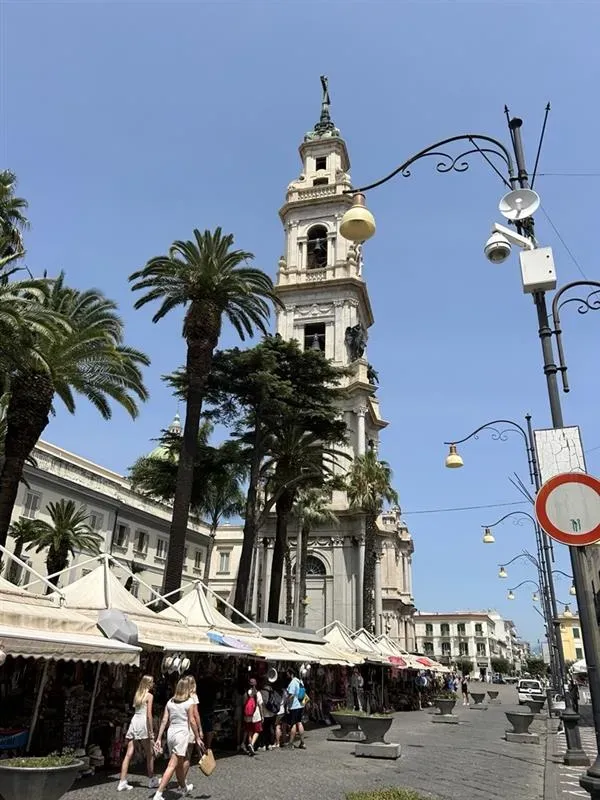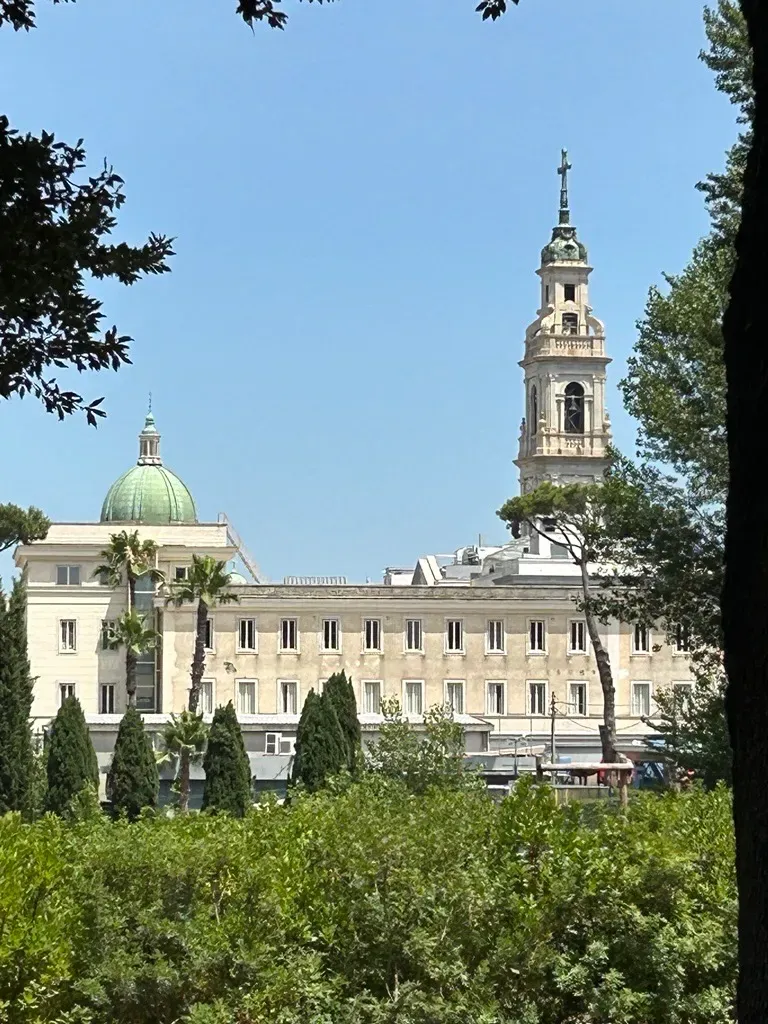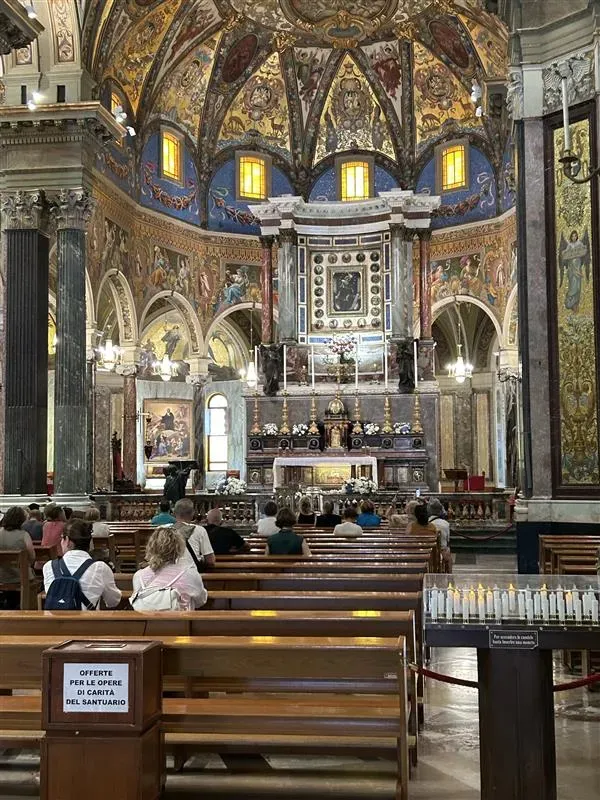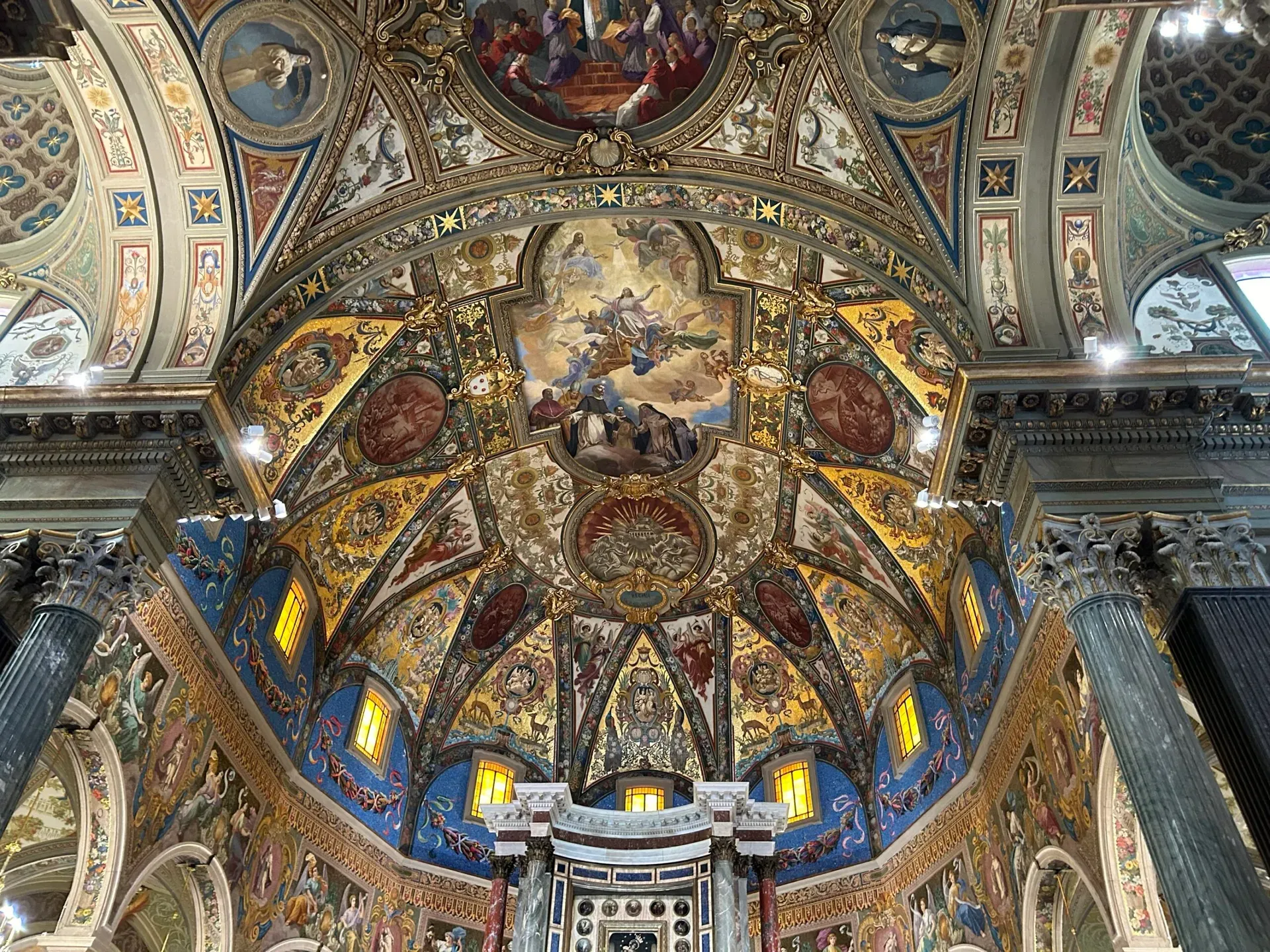Do we not all witness today the ruins of an effectively re-paganized West, with all its coldness and harshness? Do many people not today again worship false idols and demons?
Editor's note: The name of the contemporary Italian city is Pompei, whereas the ancient Roman city nearby destroyed by Vesuvius in A.D. 79 is known as Pompeii.
(LifeSiteNews) — Pope Leo XIV was elected on May 8, the feast of Our Lady of the Rosary of Pompeii, and he invoked her name during his appearance on the central loggia right afterwards.
“Today is the day of the Prayer of Supplication to Our Lady of Pompeii,” the new Roman Pontiff reminded his audience at the end of his first message and right before his Urbi et Orbi Blessing, adding that “Our Mother Mary always wants to walk at our side, to remain close to us, to help us with her intercession and her love. So I would like to pray together with you. Let us pray together for this new mission, for the whole Church, for peace in the world, and let us ask Mary, our Mother, for this special grace: Hail Mary...”

Many Catholics might not be familiar with this particular Marian feast and devotion, but it has recently become very dear to my little family, so much so that we visited last summer the Shrine of Our Lady of Pompeii in Pompei, Italy. Therefore, I decided to share the history of this devotion with our dear readers, especially since I believe it to be a very effective and powerful devotion.
The story starts with a satanic “priest,” Bartolo Longo (b. 1841), who converted back to the faith with the help of a Catholic friar. While in Pompei and despairing about his evil past, this lawyer was close committing suicide when he heard the voice of that same friar. As Longo recalled:
As I pondered over my condition, I experienced a deep sense of despair and almost committed suicide. Then I heard an echo in my ear of the voice of Br. Alberto repeating the words of Our Lady: "One who propagates my Rosary shall be saved." I exclaimed: "If your words are true that he who propagates your Rosary will be saved, I shall reach salvation because I shall not leave this earth without propagating your Rosary."
The people of Pompei were at that time were very far away from God and themselves steeped in occult practices, just as Longo had been. He stayed in Pompei and promoted the Rosary and ended up building a Shrine dedicated to Our Lady of the Rosary. He died in 1926 and was beatified in 1980 by Pope John Paul II.



That basilica was later given to the Vatican and made a Pontifical Shrine of the Blessed Virgin of the Rosary of Pompeii. Prominently displayed is a painting of Our Lady of the Rosary, holding a rosary in her hand and with St. Dominic and St. Catherine of Siena at her feet. It was already rather worn when Mr. Longo received it from a religious sister who assured him that it would work miracles. And it did. One of the miracles was the healing of a girl to whom the Blessed Mother appeared, asking her to promote the 54-day novena of Rosaries, with three novenas of petition, followed immediately by three novenas of thanksgiving in anticipation of graces rendered.
Bartolo Longo then wrote his own introductory prayers for this 54-day-novena, and it is this set of prayers that are so meaningful in our world today.
Before we look at them, I would like to make a personal comment. My own mother recommended this 54-day novena to me for my family after the death of my beloved husband, Dr. Robert Hickson. The summer of 2024, while traveling with my children in Europe – and visiting the Shrine of Our Lady Queen of the Rosary of Pompeii – I performed all these prayers. Though it was difficult, my mother assured me that Our Lady would help me accomplish these prayers, which included the prayers written by Mr. Longo and the fifteen decades of the rosary every day. It worked, and we have since then received abundant graces. After my own great experience with this devotion, I recommended it to several of my friends who themselves saw impressive and life-changing results. I cannot recommend highly enough this devotion for difficult cases! (And for those interested, some of Bartolo Longo's relics can be venerated in Chicago, Illinois)



But let us return to the message of these prayers by Bartolo Longo. He writes: “O Immaculate Virgin and Queen of the Holy Rosary, in these times of dead faith and triumphant impiety you wished to establish your throne as Queen and Mother in the ancient land of Pompeii, the resting place of dead pagans. From that place, in which idols and demons were worshipped, you today, as the Mother of divine grace, shower everywhere the treasures of the heavenly mercies. Now then, from the throne on which you graciously reign, turn also on me your benign eyes, and have mercy on me who am so greatly in need of your help.”
Here Longo speaks to our hearts. Do we not all witness today the ruins of an effectively re-paganized West, with all its coldness and harshness? Do many people not today again worship false idols and demons? But Longo also speaks to us as sinners. He who had once been possessed by demons knew how much he owed to the Blessed Mother in his liberation. Therefore, he writes in one of his prayers:
And to whom else might I turn, if not to you, who are the Solace of the wretched, the Comfort of the forsaken, the Consolation of the afflicted? I confess it to you, my soul is miserable: weighed down by enormous faults, deserving to burn in hell, unworthy of receiving graces! But are you not the Hope of those who despair, the Mother of Jesus who is the only Mediator between God and humanity, our powerful Advocate before the throne of the Almighty, the Refuge of sinners? Now then, if you only say a word on my behalf to your Son, He will hear you.
Bartolo Longo gives the Blessed Mother here her righteous position in God's salvific plan, depicting her as the Mediatrix of all Graces.
Finally, let us quote another part where he once more describes the awful ugliness of a pagan world – Ancient Pompeii – that lay before him in Pompei next to the shrine he built:
Who will worthily sing the glories of your Rosary, the victories of your Crown? To the world that is freeing itself from the arms of Jesus to throw itself into those of Satan, you obtain salvation from your Son in that valley where Satan devoured souls. You walked, triumphant, over the ruins of the pagan temples, and upon the decay of idolatry, you placed the footstool of your dominion. You transformed a place of death into a valley of resurrection and life; upon this land once dominated by your enemy, you established the citadel of refuge, where you welcome all peoples to save them.
READ: Cardinal Prevost elected as Pope Leo XIV
The famous ancient city of Pompeii had been buried and destroyed in the year 79 AD after Mount Vesuvius erupted. Because the lava completely buried the city, it was preserved in its ancient form and has been visited by people from all over the world. As some of the videos embedded here show, the ancient pagan temples are not very far from the Shrine of Our Lady of the Rosary of Pompeii.
We can only hope that there is a deep significance in the fact that Pope Leo XIV was elected pope on this special feast of Our Lady. May he become her instrument in chasing away the demons of a new pagan world, may he free people once more from the chains of sin and idolatry, and may he help Our Lady to reign in the hearts of men and bring us the peace that only Her Son, Jesus Christ, can bring.

